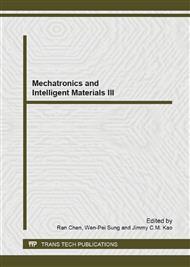[1]
R.S. Sandhu, E.J. Coynek, H.L. Feinsteink, C.E. Youmank, Role-based Access Control Models, IEEE Computer, vol. 29(2), pp.38-47, 1996.
Google Scholar
[2]
S. Du, JBD. Joshi, Supporting Authorization Query and Inter-domain Role Mapping in Presence of Hybrid Role Hierarchy, Proceedings of the eleventh ACM symposium on Access control models and technologies, ACM, 2006.
DOI: 10.1145/1133058.1133090
Google Scholar
[3]
V. Lifschitz, Answer Set Programming and Plan Generation, Artificial Intelligence, vol.138(1), pp.39-54, 2002/
DOI: 10.1016/s0004-3702(02)00186-8
Google Scholar
[4]
N. Leone, W. Faber, G. Pfeifer, T. Eiter, G. Gottlob, C. Koch, C. Mateis, S. Perri, F. Scarcello, The DLV System for Knowledge Representation and Reasoning, ACM Transactions on Computational Logic, vol.7(3), p.499–562, 2006.
DOI: 10.1145/1149114.1149117
Google Scholar
[5]
M. Shehab, E. Bertino, A. Ghafoor, SERAT: SEcure: role mApping technique for decentralized secure interoperability, Proceedings of the tenth ACM symposium on Access control models and technologies, ACM, p.159–167, 2005.
DOI: 10.1145/1063979.1064007
Google Scholar
[6]
L. Chen, J. Crampton, Inter-domain Role Mapping and Least Privilege, Proceedings of the 12th ACM symposium on Access control models and technologies, ACM, p.157–162, 2007.
DOI: 10.1145/1266840.1266866
Google Scholar
[7]
A. Gouglidis, M. Ioannis, Role-based Secure Inter-operation and Resource Usage Management in Mobile Grid Systems, Information Security Theory and Practice. Security and Privacy of Mobile Devices in Wireless Communication, p.38–53, 2011.
DOI: 10.1007/978-3-642-21040-2_3
Google Scholar
[8]
F. Beibei, L. Xiaoyan, L. yang, B. yang, X. Chunhe, Conflict Detection Model of Access Control Policy in Collaborative Environment, Proceedings of the 2011 International Conference on Computational and Information Sciences, p.377–381, 2011.
Google Scholar
[9]
H. Jinwei, L. Ruixuan ,L. Zhengding, Rbac-based Secure Interoperation Using Constraint Logic Programming, Computational Science and Engineering (CSE'09), Vol. 2, p.867–872, IEEE, 2009.
DOI: 10.1109/cse.2009.249
Google Scholar


